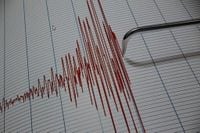In the early hours of May 6, 2025, a magnitude 3.6 earthquake rattled the Grésivaudan valley, located between Grenoble and Chambéry, at approximately 3:40 AM. The epicenter was pinpointed in the small town of Sainte-Marie-d'Alloix, just over 30 kilometers northwest of Grenoble. Reports from the National Seismic Monitoring Network (Rénass) confirmed the seismic activity, which was felt by many residents in the region.
Initial reports indicated a magnitude of 3.6, but this was later revised to 3.4 by the French Central Seismological Bureau (BCSF-Renass). According to Sophie Lambotte, a seismologist with the bureau, “At least forty of our seismometers recorded the earthquake.” The tremor was significant enough to awaken many people, with some residents describing their experiences on social media.
An internet user from La Terrasse, located 9 kilometers from the epicenter, recounted a “very powerful and brief vibration, accompanied by a rumble.” Another resident from La Motte-Servolex, situated 22 kilometers away, shared, “I was abruptly awakened, believing someone had shaken my couch to wake me.” Similarly, a resident of Chapareillan, just 7 kilometers from the epicenter, experienced shaking furniture and a rumble, likening it to the sound of a large truck passing or a heavy storm.
Despite the initial shock, local firefighters reported no injuries or significant damage. This lack of destruction was echoed by Lambotte, who noted that the earthquake was not strong enough to cause damage to buildings. “It’s not surprising to have earthquakes in the Grenoble-Chambéry axis,” she explained. “It’s a seismic zone with known faults along the Belledonne massif.”
The Belledonne fault has been responsible for around 3,500 seismic events since 1989, although many of these go unnoticed by the general population. The last significant earthquake felt in the Alps occurred in 1962, when a tremor in the Vercors region caused notable damage and was felt as far away as Lyon and Grenoble.
Residents across the Grésivaudan valley reported varying sensations during the quake, with some describing the noise as resembling an explosion near the epicenter. As one internet user put it, “I confirm. Panic wake-up, slight shaking of the walls for a second, south of Chambéry.”
The earthquake's impact was felt within a radius of 30 to 40 kilometers, affecting communities from Isère to Savoie. In Voreppe, residents reported hearing “cracking noises,” and others in Crêts-en-Belledonne mentioned being startled awake.
Although the seismic activity was alarming for many, experts reassured the public that such occurrences are not uncommon in the region. The Belledonne fault system has a history of producing earthquakes, but most are too weak to be felt. Lambotte emphasized, “Many of these earthquakes are not felt by the population.”
In a historical context, the last powerful earthquake that truly shook the region dates back over six decades. The event in 1962 in the Vercors was a stark reminder of the potential risks associated with living in a seismically active area. As Lambotte noted, “The last powerful earthquake felt in the Alps dates back to 1962, in the Vercors.”
As the community processes the recent quake, it serves as a reminder of the natural forces at play in the region. While the immediate effects were minimal, the event has sparked conversations about earthquake preparedness and awareness among residents.
In the aftermath, local authorities and seismologists continue to monitor the situation closely. With ongoing analyses being conducted to refine the earthquake's power and location, the scientific community remains vigilant. As Lambotte concluded, “We are still gathering data to better understand this event.”





